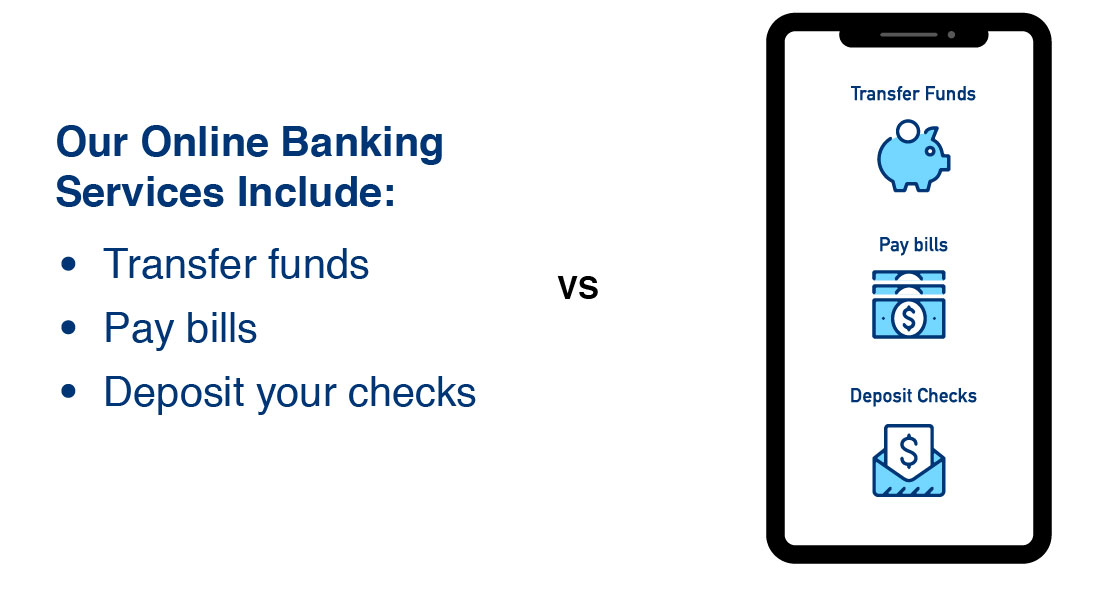Bring Your Financial Marketing Campaign To Life With The Power Of Visuals
Information Overload
As we are well into 2020, it is nearly impossible to find a business that does not have an internet presence. The internet has prompted thousands of companies to flock to digital marketing to promote their products and services. While this potentially allows them to increase their reach globally, it also means they must employ marketing strategies that help them stand out from the rest. Likewise, accessibility to thousands of different options on the internet has a tremendous impact on consumers. With so much to choose from, it becomes increasingly challenging for people to locate the companies and hence products and services that work best for them. More variety makes it difficult for businesses to break through the clutter and just as difficult for consumers to notice them among it. As the old saying goes, sometimes there can be too much of a good thing.
Forbes estimated that there are 2.5 quintillion (2,500,000,000,000,000,000) bytes of data created each day! In just 1 minute, 550 new social media accounts get created, 300 hours of video are uploaded to YouTube, 69,444 million photos get posted to Instagram, and 293,000 statuses get updated on Facebook. As the power of technology increases, these numbers will continue to grow exponentially. This large supply of data creates information overload at a rate that may reach a critical stage. Consequentially, it makes it harder for companies to design marketing campaigns that represent a unique brand voice that captures the attention and interest of consumers.
Increase Clarity and Intrigue
In particular, the banking industry can benefit significantly from marketing efforts that differentiate it from competitors, as financial marketing often comes with a host of challenges. Intimidation can be one of the most significant hurdles that this industry faces. Because financial institutions handle money, some people are intimated by these essential services, which are often accompanied by complicated terminology and regulations. It is not uncommon for the average person to be confused by terms like APR’s, annuities, and accrued interest. Also, these terms may be reasonably unexciting to some, making it vital to disseminate information through more intriguing mediums. So, how should financial marketers portray information in a way that is clearer and more engaging? Visual content marketing.
Why Visuals?
If you’ve ever heard someone say that they are a visual learner, there is quite a bit of data to back it up. For instance, humans respond to visual data better than any other kind of data. Our brains process images 60,000 times faster than text. In a world where data gets delivered to us through so many channels, this statistic is highly relevant. Financial institutions can capitalize on this phenomenon by incorporating it into their marketing strategies. Transforming text to more entertaining formats such as infographics, video, and animation, is a more effective way to entice consumers to financial marketing campaigns.
Infographics, Images & Icons
Infographics are a great way to display valuable information in a simplified and appealing format. Let’s say a bank/credit union offers plenty of financial services through its Mobile Banking App. Instead of using wordy descriptions and bulleted lists to show the benefits, it may be helpful to use visual representations of the information. Consider the example below. A straightforward phone graphic replaces a standard bullet-point list. The graphic shows simple icons that represent the services, and these images are clean and pleasantly colored, bringing the information to life. Be mindful when selecting imagery to avoid confusion or ambiguity.

Sight & Movement
The importance of video marketing in the digital age is irrefutable. Not only does video create a visual experience for the viewer, but the combination of movement and sound creates a unique experience that can bring a brand to life. There are many ways to incorporate video into digital marketing campaigns. One type of video to implement is known as “ephemeral content.” This type of content is only accessible for brief periods, meant to elicit an immediate and urgent response from users. Think of the “Story” function on Instagram, Snapchat, Facebook, and YouTube. These ephemeral videos may include simple videos portraying limited time offers, low APR rates, or any other deals that the bank/credit union is offering for a limited time.
Another great use for video is through video landing pages. A landing page may be the first impression a visitor has of a website. Video landing pages include an embedded video that can illustrate the value of certain products, services, or offers. These videos lie at the top of the page in the forefront and are essential in capturing viewers. They may make users feel welcome to the website and inspire them to explore what there is to offer. With this in mind, video is a great way to capture people upon the first click. Studies show that including video on a landing page can increase conversions by up to 80%.
Producing video content that elicits emotion is also an effective way to reach visitors. These videos may be accessed and embedded within different pages of the site and can include customer testimonials or success stories. Perhaps a customer just purchased a new home or has been a loyal member for many years. This type of content produces higher levels of emotion and memorability, residing more profoundly with the viewer. Instead of charts filled with text and long sentences, utilizing video can garner a more personal connection, increasing average session time on the website.
Eye-catching Animation
In addition to video, animation can be particularly useful in marketing. Animation also requires less equipment than standard video, so it may be a more cost-effective option to incorporate movement. By merely giving motion to a still image, the human eye will follow this movement, retaining attention longer. Digital signage produces 400% more eye attraction than traditional signage, like posters or billboards. Examples of animation include digital ads, GIFs, and moving infographics. Consider a bank or credit union promoting low auto loan rates in a social media campaign. An example of a potential GIF or moving animation may be in the form of a fun, stylized vehicle driving down a street. A range of colors and movements can automatically attract the eye and draw viewers directly to the content. Animations like these can be present in many different formats such as logos, social content, banner ads, digital billboards, landing pages, and more. Taking advantage of the human eye and its attraction to motion can be very powerful in garnering more clicks and engagement.
Make the Most of Digital Campaigns
The bank and credit union sector may find it particularly useful to employ these visual techniques in marketing campaigns. By better understanding the human brain, marketers can capitalize on human tendencies that draw us towards color, movement, and emotion. Consumers can benefit from these efforts, as unfamiliar banking terminology is explained better through active and visual stimuli. Incorporating infographics, video, and animation in financial marketing campaigns can effectively increase engagement and attention in a world where our focus is fleeting, ultimately improving the bottom line.
Want to learn more about financial marketing? Feel free to check out the rest of our blog for topics like Fintech, Bank Marketing ROI, IP Targeting, and more. At Strategis, we offer expert guidance on how to strengthen your digital marketing efforts and create robust, effective campaigns. If you’d like to talk, we’d like to listen. Connect With Us!






